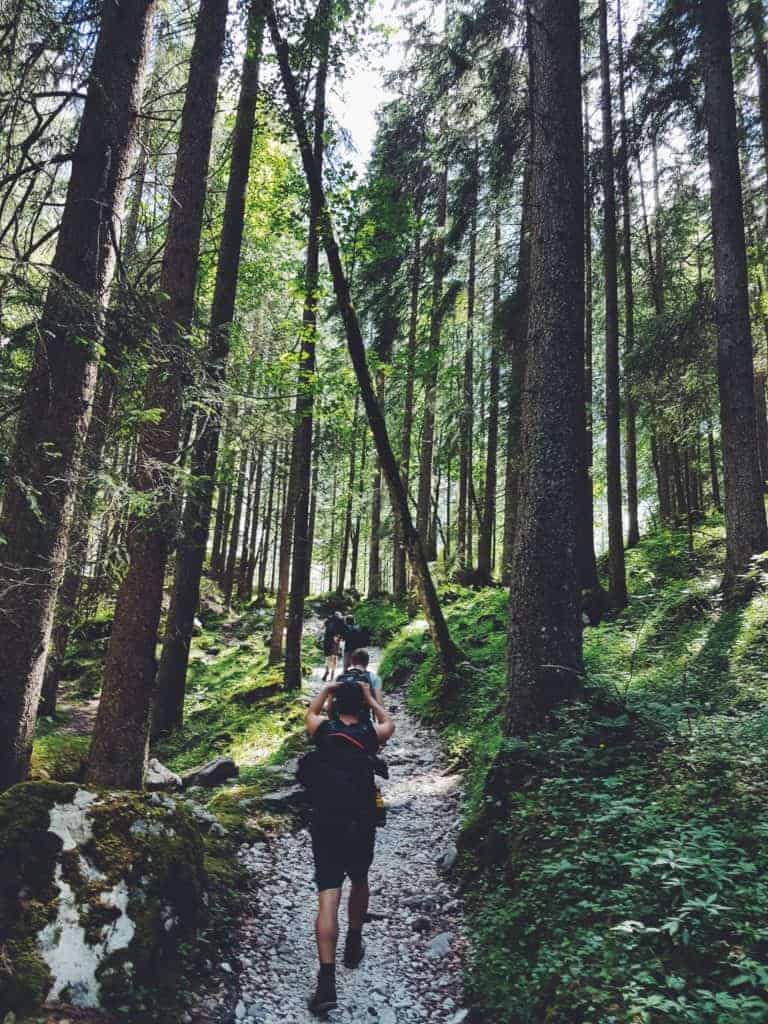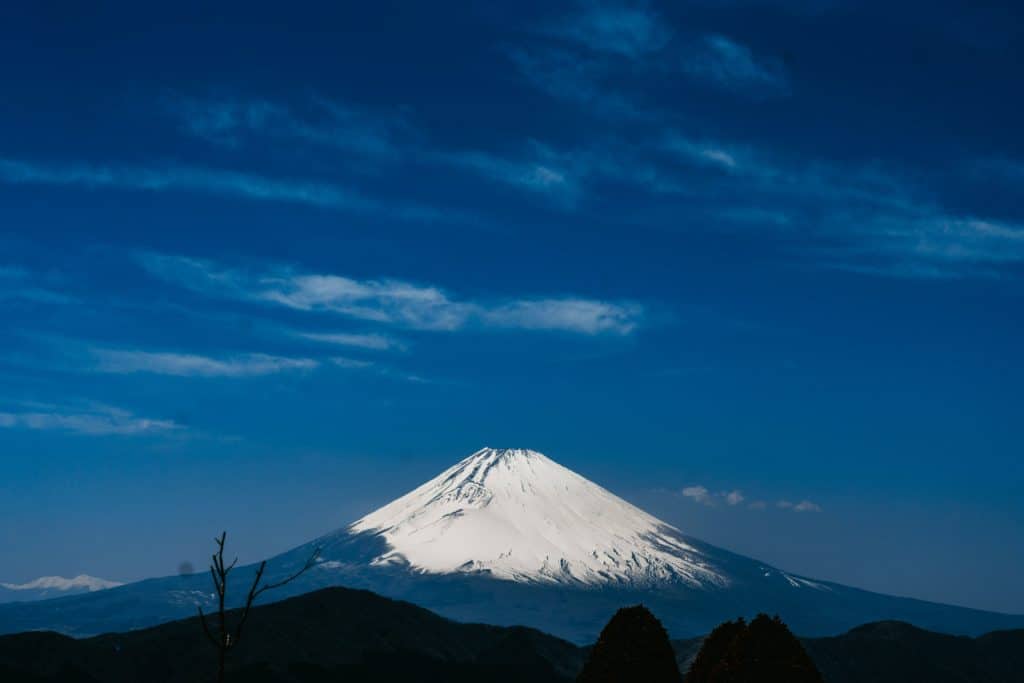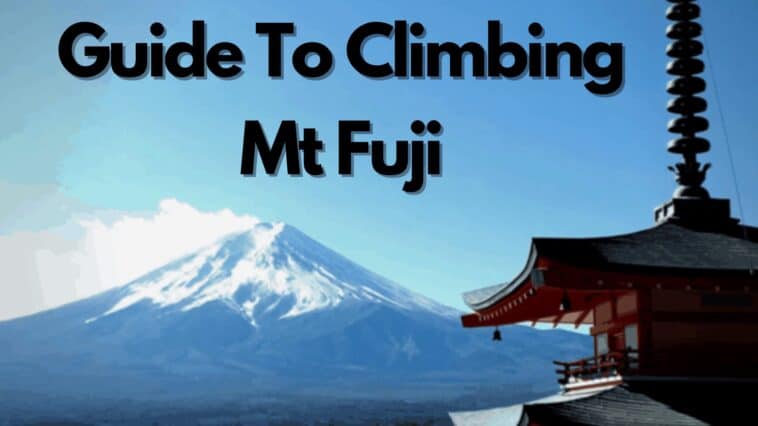Here’s a beginner’s guide to climbing Mount Fuji. Check it out!
Mount Fuji is one of the most iconic landmarks of Japan and attracts climbers from all over the world. The mountain is located in the central part of Honshu Island and is the highest peak in Japan, standing at 3,776 meters (12,388 feet) tall.
Climbing Mount Fuji is a challenging but rewarding experience, and it is a must-do activity for many visitors to Japan.
If you are planning to climb Mount Fuji in 2024, it is important to be well-prepared. Climbing the mountain requires physical fitness, proper gear, and knowledge of the routes and safety precautions.

This beginner’s guide will provide you with all the essential information you need to know before embarking on your journey to the summit of Mount Fuji.
In this guide, you will learn about the different routes up Mount Fuji, the significance of the mountain in Japanese culture, safety and etiquette tips, and what to expect after the climb.
With this information, you will be able to plan your climb with confidence and have a successful and memorable experience on one of the world’s most famous mountains.
Key Takeaways
- Planning is key to a successful climb up Mount Fuji.
- There are several routes up the mountain, and each has its own unique features and challenges.
- Safety and etiquette are crucial when climbing Mount Fuji, and climbers should be well-prepared and respectful of the mountain and other climbers.
Page Contents
Beginner’s Guide To Climbing Mount Fuji
Planning Your Climb To Mt Fuji
When planning a climb to Mount Fuji, it’s important to consider several factors to ensure a successful and enjoyable experience. This section will cover the key aspects of planning a climb, including choosing the right season, physical preparation, and what to pack.
Choosing the Right Season
The climbing season for Mount Fuji typically runs from early July to mid-September. During this time, the weather is generally mild and stable, making it the best time for climbing. However, it’s essential to check the weather forecast and trail conditions before embarking on the climb. It’s also important to note that during the peak season, the trails can be crowded, so it’s best to plan ahead and book accommodation in advance.
Physical Preparation
Climbing Mount Fuji is a strenuous activity that requires physical fitness. It’s recommended to start preparing for the climb at least two months in advance. This includes regular cardio exercises such as running or cycling, as well as strength training to build endurance and muscle strength. It’s also important to stay hydrated and maintain a healthy diet to ensure optimal physical condition.
What to Pack
When packing for a climb, it’s important to pack light but also include essential items for the climb. Some of the essential items include sturdy hiking boots, warm clothing, rain gear, sunscreen, and a hat.
It’s also essential to bring enough food and water for the climb, as there are limited food and water sources on the mountain. A backpack with a capacity of at least 30 liters is recommended to carry all the necessary items.
In summary, planning a climb to Mount Fuji requires careful consideration of several factors, including choosing the right season, physical preparation, and what to pack. By following these guidelines, climbers can ensure a safe and enjoyable experience on this iconic mountain.
The Routes Up Mount Fuji
Mount Fuji is a popular destination for hikers and climbers from around the world. There are four main trails that lead to the summit of Mount Fuji, each with its own unique characteristics and challenges.
Yoshida Trail
The Yoshida Trail is the most popular and busiest route up Mount Fuji. It starts at the Fuji-Subaru Line 5th Station and leads to the summit from the north side of the mountain. This trail is perfect for people who want to stay overnight before finishing the hike at dawn, as there are mountain cabins and other facilities scattered on the way up. The trail is well-maintained and marked, making it easy to follow for beginners.

Subashiri Trail
The Subashiri Trail starts at the Subashiri 5th Station on the southeast side of the mountain. This trail is less crowded than the Yoshida Trail, but it is also steeper and more challenging. Hikers on this trail will need to be prepared for loose rocks and steep inclines. The trail is also longer than Yoshida Trail, so hikers should plan accordingly.
Gotemba Trail
The Gotemba Trail is the least popular and most challenging route up Mount Fuji. It starts at the Gotemba 5th Station on the southwest side of the mountain. This trail is steep and rocky, with loose volcanic ash and scree. Hikers on this trail will need to be in good physical condition and have experience with steep and rocky terrain.
Fujinomiya Trail
The Fujinomiya Trail starts at the Fujinomiya 5th Station on the south side of the mountain. This trail is shorter than the Yoshida Trail, but it is steeper and more challenging. Hikers on this trail will need to be prepared for steep inclines and loose rocks. The trail is well-maintained and marked, making it easy to follow for beginners.
In summary, each trail up Mount Fuji has its own unique characteristics and challenges. Hikers should choose a trail that matches their skill level and physical condition. Regardless of the trail chosen, hikers should be prepared for steep inclines, loose rocks, and changing weather conditions.
Geography and Climate Of Mount Fuji
Mount Fuji is a dormant volcano located in Honshu, Japan’s largest island, and is the highest mountain in the country, with an elevation of 3,776.24 meters (12,389 feet). It is situated in the Fuji-Hakone-Izu National Park and is visible from Tokyo on clear days.
Mount Fuji is a popular destination for tourists and hikers alike, with over 300,000 visitors climbing to the summit each year and it should definitely be part of your Tokyo Itinerary

Mount Fuji’s climate is heavily influenced by its location near the Pacific Ocean. The mountain is covered in snow for most of the year, and the climbing season runs from July to September when the weather is most favorable. During the climbing season, temperatures at the summit can range from -5°C to 5°C (23°F to 41°F), and the wind chill can make it feel much colder.
It is important to note that Mount Fuji’s weather can be unpredictable, and climbers should be prepared for sudden changes in temperature, strong winds, and heavy rain. Visitors should also be aware that the mountain is often shrouded in clouds, causing low visibility and making it difficult to navigate the trails.
In summary, Mount Fuji is a majestic mountain with a unique climate that requires visitors to be prepared for sudden changes in weather. Climbers should be aware of the risks associated with climbing and should take necessary precautions to ensure a safe and enjoyable experience.
Safety and Etiquette
Health and Safety Tips
Climbing Mount Fuji can be a strenuous activity, so it is important to take proper precautions to ensure a safe and enjoyable experience. Here are some health and safety tips to keep in mind:
- Stay hydrated: Bring plenty of water and drink it regularly to avoid dehydration.
- Dress appropriately: Wear comfortable, lightweight clothing that is suitable for the weather conditions. Layers are recommended as the temperature can change quickly at higher altitudes.
- Use sunscreen: The sun can be intense at higher elevations, so be sure to apply sunscreen regularly to protect your skin.
- Take breaks: Rest frequently to avoid exhaustion and altitude sickness. If you experience symptoms such as headache, dizziness, or nausea, descend immediately and seek medical attention.
Mountain Etiquette
Climbing Mount Fuji is not only about reaching the summit, but also about respecting the mountain and other climbers. Here are some important mountain etiquette rules to follow:
- Stay on the trail: Do not wander off the designated trail as it can damage the environment and put you in danger.
- Pack out what you pack in: Bring a garbage bag and carry all your trash with you. Do not leave any litter on the mountain.
- Be considerate of others: Be mindful of other climbers and their needs. Do not block the trail or play loud music. Use headphones if you want to listen to music.
- Respect the mountain: Mount Fuji is considered a sacred site in Japan. Show respect by not shouting, littering, or engaging in any disrespectful behavior.
By following these health and safety tips and mountain etiquette rules, climbers can have a safe and enjoyable experience on Mount Fuji while also preserving the environment and respecting the mountain and other climbers.
After the Climb

Descending the Mountain
Descending Mount Fuji can be just as challenging as climbing it, especially if the hiker is tired or has sore muscles. It is important to take breaks and stretch frequently to avoid injury. Hikers should also be aware of the time as the last bus from the 5th station leaves at 8:30 pm, and missing it means having to pay for a taxi or staying overnight.
Local Attractions
After the climb, hikers can visit the Fuji Five Lakes area, which offers stunning views of the mountain and a variety of outdoor activities, such as fishing, boating, and hiking. The area is also known for its hot springs, which can be a great way to relax and soothe sore muscles after the climb.
Other nearby attractions include the Oshino Hakkai Springs, a group of eight crystal-clear ponds fed by snowmelt from Mount Fuji. The ponds are surrounded by lush greenery and offer a peaceful and picturesque setting for a stroll or picnic.
In addition, the nearby city of Fujinomiya offers a variety of cultural and historical attractions, including the Fujisan Hongu Sengen Taisha Shrine, which is dedicated to the mountain and offers a glimpse into Japan’s spiritual and cultural heritage.
Overall, descending Mount Fuji and exploring the surrounding area can be a great way to unwind after the climb and experience the natural beauty and cultural richness of Japan.
Climbing Mt Fuji: FAQs
What is the best season to climb Mount Fuji for beginners?
For beginners, the best season to climb Mount Fuji is during the official climbing season, which runs from early July to mid-September. During this time, the weather is generally milder, and the trail is well-maintained and easily accessible. However, it’s important to keep in mind that the weather can be unpredictable, so climbers should always check the forecast before starting their ascent.
What are the essential preparations for a beginner climbing Mount Fuji?
Before climbing Mount Fuji, beginners should engage in regular cardiovascular exercise, strength training, and endurance workouts to build their stamina. It’s also essential to acclimatize to the altitude by spending a few days in the area before starting the climb. Climbers should also pack appropriate gear and clothing, including sturdy hiking boots, warm layers, and rain gear. Lastly, climbers should bring enough food and water to sustain them throughout the climb.
Is a guide necessary for beginners to safely climb Mount Fuji?
While a guide is not necessary for beginners to climb Mount Fuji, it’s highly recommended. A guide can help climbers navigate the trail, provide valuable information about the mountain and its history, and ensure that climbers are safe throughout the climb.
What are the estimated costs for a beginner climbing Mount Fuji?
The estimated costs for a beginner climbing Mount Fuji can vary depending on the climber’s level of preparation and the route they choose to take. Climbers should expect to pay for transportation, accommodation, food, and any gear or equipment they may need. A budget of around ¥40,000 to ¥50,000 (approximately $360 to $450 USD) should be sufficient for most climbers.
How long should a beginner expect to take to ascend and descend Mount Fuji?
For most beginners, ascending and descending Mount Fuji takes around 10 to 12 hours. However, this can vary depending on the climber’s level of fitness and the route they choose to take. Climbers should be prepared to take breaks and rest throughout the climb to avoid exhaustion.
What are the risks involved for beginners climbing Mount Fuji and how can they be mitigated?
The risks involved for beginners climbing Mount Fuji include altitude sickness, dehydration, and exhaustion. These risks can be mitigated by engaging in regular exercise and acclimatizing to the altitude before starting the climb. Climbers should also bring enough food and water to sustain them throughout the climb and take breaks as needed. It’s also important to be aware of the signs and symptoms of altitude sickness and seek medical attention if necessary.
Also Read





